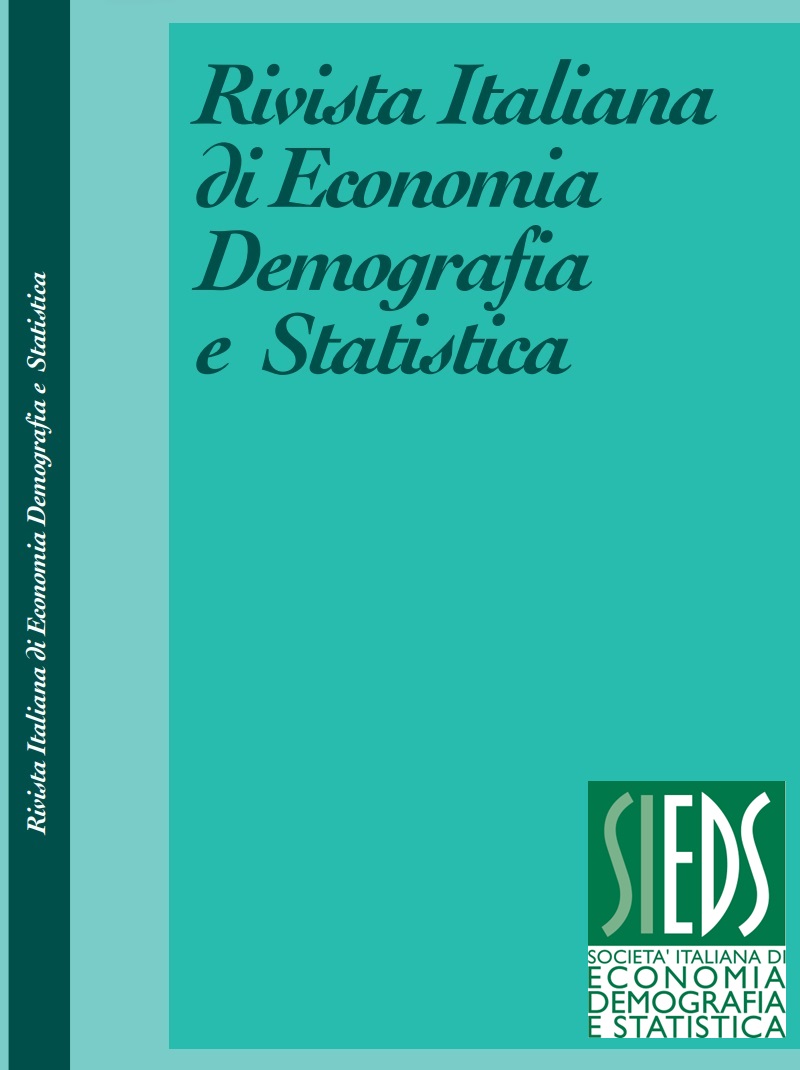Sampling and civil society engagement in surveying hard to reach populations
DOI:
https://doi.org/10.71014/sieds.v78i3.392Abstract
‘Hard-to-reach’ is a term used to describe sub-groups of the population that may be difficult to reach or involve in research and social statistics. Examples include LGBT+ people, irregular migrants, homeless people and more in general those living in vulnerable social and economic situation and people at risk of discrimination. Invisibility and cumulative disadvantages may characterize hard-to-reach populations. These groups are difficult to identify and recruit, and their sampling frames are usually unavailable. Moreover, official statistics need to gather data that can help to design and monitor policies to combat inequalities, discrimination and disadvantages. The National Statistical Institute of Italy has a long tradition on investigating different hard-to-reach groups. This paper critically analyses these different experiences, focusing on two main aspects: a) sampling techniques and b) civil society involvement. Strengths and limitations, as well as future prospects are discussed.
References
CRAWFORD F. W., WU J., HEIMER R. 2018. Hidden population size estimation from respondent-driven sampling: a network approach, J Am Stat Assoc. Vol. 113, No. 522, pp. 755–766. doi:10.1080/01621459.2017.1285775 DOI: https://doi.org/10.1080/01621459.2017.1285775
BOERI T., BRAGA M., CORNO L. 2009. L’economia invisibile dei senza casa. in GNOCCHI R. (a cura di), Homelessness e dialogo interdisciplinare. Analisi a confronto tra modelli diversi, Roma: Carocci.
DEVILLE J.C., LAVALLÉE P. 2006. Indirect Sampling: The Foundation of the Generalized Weight Share method, Survey Methodology, Vol. 32, No. 2
DE ROSA E., INGLESE F. 2018. Diseguaglianze e discriminazioni nei confronti delle persone LGBT: quale contributo della statistica ufficiale?, RIEDS, Vol. LXXII, No. 4, pp.77-88.
EU LGBTI Survey II. 2019. https://fra.europa.eu/en/project/2018/eu-lgbti-survey-ii
HECKATHORN D. D. 1997. Respondent-Driven Sampling: A New Approach to the Study of Hidden Populations, Social Problems, Vol. 44, No. 2, 1 pp. 174–199. DOI: https://doi.org/10.1525/sp.1997.44.2.03x0221m
HECKATHORN D. D. 2002. Respondent-Driven Sampling II: Deriving Valid Population Estimates from Chain-Referral Samples of Hidden Populations, Social Problems, Vol. 49, No. 1, pp. 11-34. Oxford University Press. DOI: https://doi.org/10.1525/sp.2002.49.1.11
INGLESE F., MASI A. 2019. Una metodologia per la stima della homelessness attraverso le Unità di strada: il caso della città di Torino, IWP, N. 5.
ISTAT. 2014. Indagine sulle discriminazioni. Anno 2011.
ISTAT. 2021. Abitare in transizione.
ISTAT-UNAR. 2022. Survey on Labour Discrimination toward LGBT+ People (in Civil Union or formerly in union). Year 2020- 2021.
ISTAT. 2022. Pilot Survey on Discrimination (2022-2023).
ISTAT-UNAR. 2023. L’indagine sulle discriminazioni lavorative nei confronti delle persone lgbt+ (non in unione civile o già in unione). Anno 2022.
ISTAT, COMUNE DI ROMA. 2024. I senza tetto a Roma, press release.
KALTON G. 2009. Methods for oversampling rare subpopulations in social surveys. Survey methodology, Vol. 35, No.2, pp. 125-141.
KALTON G. 2023, Probability vs. Nonprobability Sampling: From the Birth of Survey Sampling to the Present Day, Statistics in transition new series, Vol. 24, No. 3, pp. 1–22, https://doi.org/10.59170/stattrans-2023-029 DOI: https://doi.org/10.59170/stattrans-2023-029
LAVALLÉE P. 2007. Indirect Sampling. New York: Springer. DOI: https://doi.org/10.1007/978-0-387-70782-2
MARPSAT M., RAZAFINDRATSIMA N. 2010. Survey methods for hard-to-reach populations: introduction to the special issue, Meth. Innovations Online, 5(2). DOI: https://doi.org/10.4256/mio.2010.0014
MILAN S., VAN DER VELDEN L. 2016. The Alternative Epistemologies of Data Activism, Digital Culture & Society, Vol. 2, No. 1. pp. 57-74. DOI: https://doi.org/10.14361/dcs-2016-0205
NUR N., DI LEO F. 2024. Reaching the unreachable. Innovative strategies to approach hard-to-reach populations, RIEDS, Vol. 78, No. 2, pp. 41-51.
PRATESI M. 2023. Towards A Framework To Harness Data By Citizens: The Istat Experience, presentation 64th ISI World Statistics Congress - Ottawa, Canada.
RAIFMAN S., DEVOST M.A., DIGITALE J.C. 2022. Respondent-Driven Sampling: a Sampling Method for Hard-to-Reach Populations and Beyond, Curr Epidemiol Rep, Vol. 9, pp. 38–47. DOI: https://doi.org/10.1007/s40471-022-00287-8
UN Office of the High Commissioner for Human Rights. 2018. A human rights-based approach to data
Downloads
Published
Issue
Section
License
Copyright (c) 2024 Eugenia De Rosa, Francesca Inglese

This work is licensed under a Creative Commons Attribution 4.0 International License.



